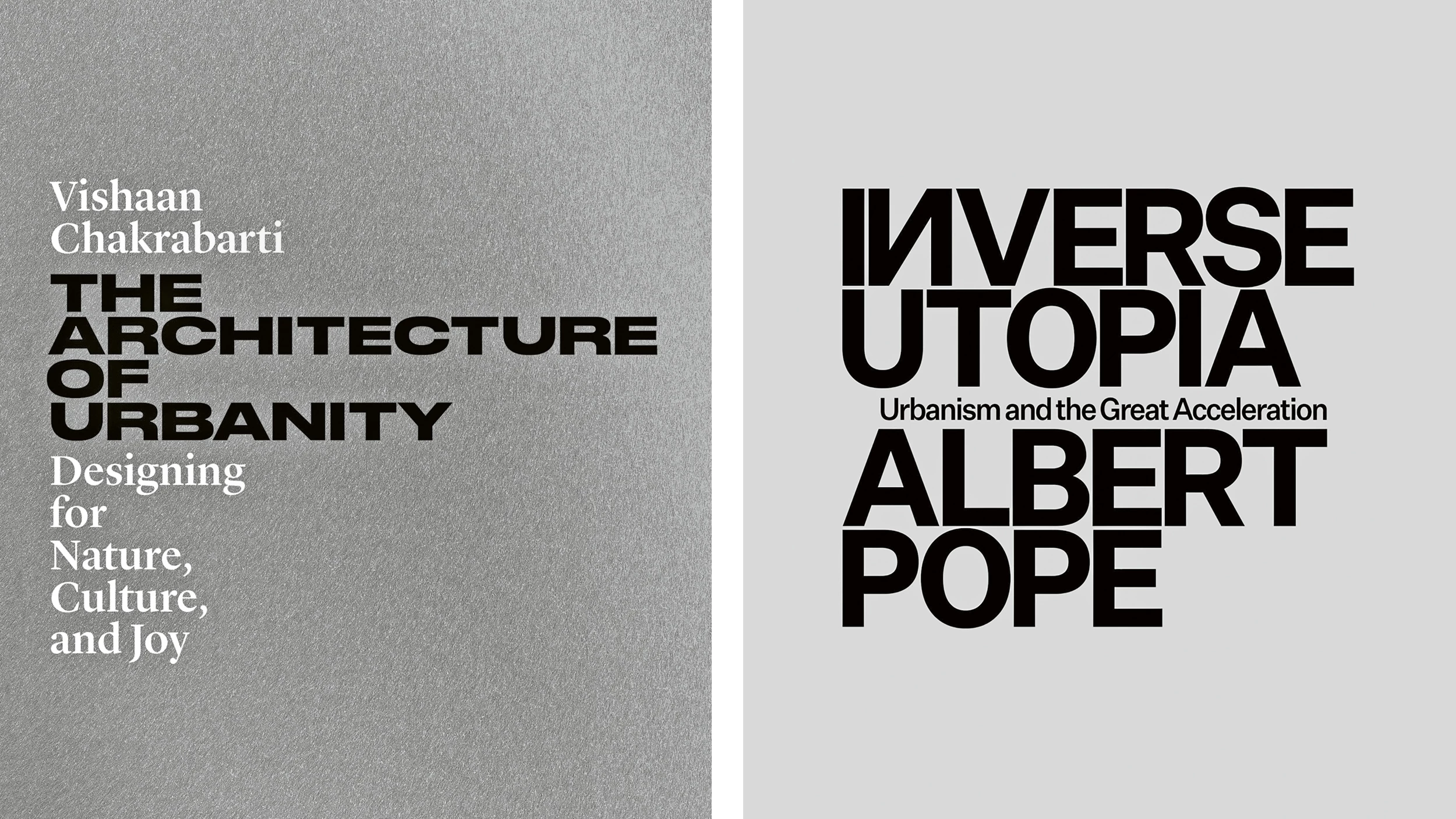
In their latest books, both Vishaan Chakrabarti and Albert Pope propose new models for the city. But whereas the Calcutta-born New Yorker defends a pragmatic utopia that inserts ecological architectures into the existing urb, the Rice professor advocates an inverse utopia of skyscrapers and colossal blocks that give shape to the Great Acceleration ongoing since the mid-20th century. Confronting the dilemmas and the future of the American city, the two architects arrive at polemically different conclusions.
The Architecture of Urbanity was preceded by A Country of Cities (2013, with foreword by Norman Foster), and Chakrabarti here furthers his defense of urban density in a world hit by the climate crisis, pandemics, and technological mutations. Especially sensitive to themes like racism, social inequality, or the rise of fascism, he traces an urbanistic genealogy that goes from Haussmann, Cerdá, or Le Corbusier to Robert Moses, Jane Jacobs, and Rem Koolhaas, culminating with Hannah Beachler, the Afro-American who designed sets for the superhero movies Black Panther and Wakanda Forever with an Afrofuturist aesthetic. But Chakrabarti is not as original in his gallery of architectural heroes, which features recent Pritzker Prize winners (Aravena, Lacaton & Vassal, Doshi, Kéré, Grafton Architects), to which he adds O’Donnell & Tuomey, Michael Maltzan, Tatiana Bilbao, or Marina Tabassum. In the end, his pragmatic proposal crystallizes in developments of ‘Goldilocks’ scale (some 120 homes per hectare) formed by three-story buildings that make it easy to avoid the restrictions imposed by fire-safety or wheelchair-access rules, and use architecture to rescue a city distorted by capital and building codes.
The thesis of Inverse Utopia was likewise prefigured in Ladders (1996, 2015 with foreword by Pier Vittorio Aureli), and Pope now refines his theoretical approach, which rejects architectural and urban eclecticism to find a benchmark in Lafayette Park, designed by Mies van der Rohe with Ludwig Hilberseimer, the latter being the book’s lead character. Recognizing that the Great Acceleration has transformed the metropolis into the megalopolis, and has moved us from the mechanical logic of the grid to the organicism of the spine, he censures ‘urban simulations’ (OMA’s Waterfront City, Foster’s Masdar, Piano’s Daimler Platz) to praise the efforts made (from Patrick Geddes to Archigram or Fuller) to give the technosphere an urban shape. But plans like Ebenezer Howard’s Garden City or Le Corbusier’s Ville Radieuse are in the end what have colonized the planet, and both are based on the spine – a main horizontal or vertical axis ending in a cul-de-sac and crossed transversally by secondary axes – as geometry of addition, and it is this scheme inspired by Hilberseimer that is used in his proposals for skyscrapers of structural wood amid sustainable forest plantations. From Theodor Adorno to Peter Sloterdijk by way of Günther Anders, German philosophy livens up a text which is also fascinated with Asian extremes of density (as many as 700 dwellings per hectare in Hong Kong’s City One) to imagine a perhaps plausible dystopia.








